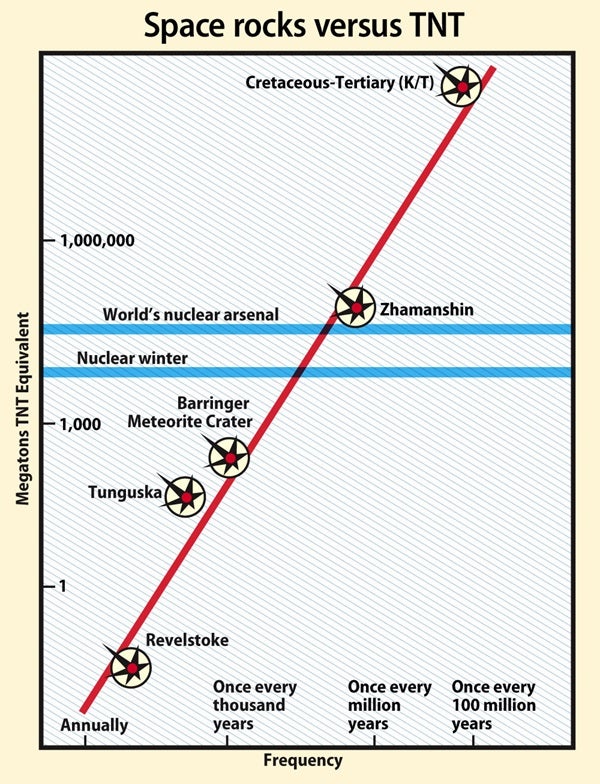In 1924, Algernon Charles Gifford wrote in the somewhat obscure New Zealand Journal of Science and Technology that meteorite impacts are profoundly different from the more familiar impacts of bullets because of the enormous energy objects moving at meteoritic velocities carry. He computed that a meteorite traveling at 7,200 mph (11,600 km/h) (and that’s relatively slow — the average impact velocity on Earth is actually about 36,000 mph [58,000 km/h]) contains as much energy as an equal mass of TNT. (This is because energy is proportional to the velocity squared.) Gifford proposed that, at such speeds, the final crater is essentially blasted out as if by an explosion, rather than by simply pushing material aside.
The energy content of impacting meteorites is larger than the energy required to melt or even vaporize the projectile completely. While about half of this energy goes toward opening the crater, the remaining energy stays in the impactor and ultimately disperses it into tiny droplets of molten iron — as occurred at Barringer Meteorite Crater in Arizona — or even as rock vapor.
The energy content of impacting meteorites is larger than the energy required to melt or even vaporize the projectile completely. While about half of this energy goes toward opening the crater, the remaining energy stays in the impactor and ultimately disperses it into tiny droplets of molten iron — as occurred at Barringer Meteorite Crater in Arizona — or even as rock vapor.
In 1900, Daniel Moreau Barringer first investigated the site eventually named in his honor as a potential source for the nickel-iron he believed was buried beneath the crater floor. Despite vigorous attempts to locate the supposed mass of iron, none was ever found. Finally, in 1946, meteoriticist Henry H. Nininger recognized that small pieces of iron scattered outside the crater were all that remained of the projectile. — Jay Melosh, Purdue University, West Lafayette, Indiana










